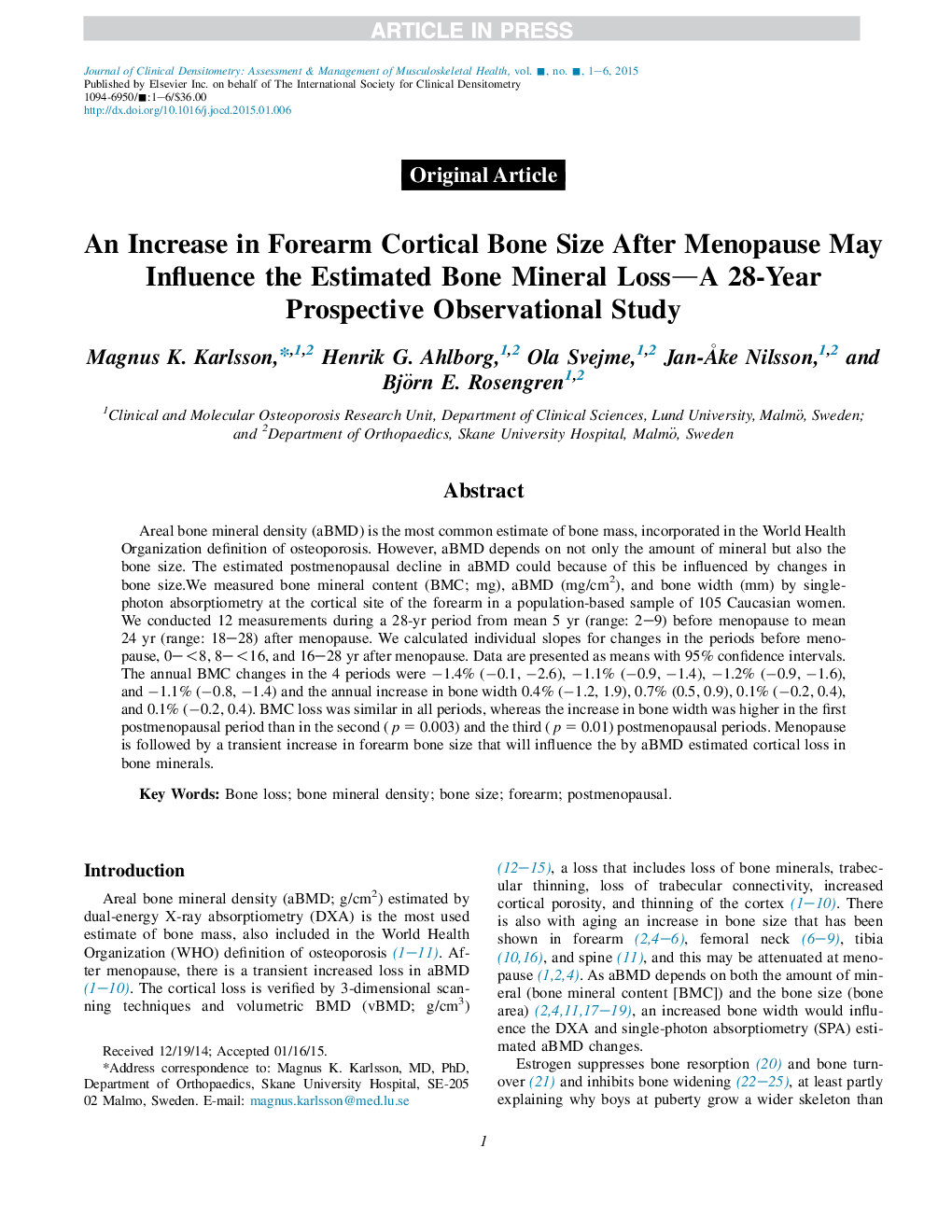| Article ID | Journal | Published Year | Pages | File Type |
|---|---|---|---|---|
| 3270483 | Journal of Clinical Densitometry | 2016 | 6 Pages |
Abstract
Areal bone mineral density (aBMD) is the most common estimate of bone mass, incorporated in the World Health Organization definition of osteoporosis. However, aBMD depends on not only the amount of mineral but also the bone size. The estimated postmenopausal decline in aBMD could because of this be influenced by changes in bone size.We measured bone mineral content (BMC; mg), aBMD (mg/cm2), and bone width (mm) by single-photon absorptiometry at the cortical site of the forearm in a population-based sample of 105 Caucasian women. We conducted 12 measurements during a 28-yr period from mean 5 yr (range: 2-9) before menopause to mean 24 yr (range: 18-28) after menopause. We calculated individual slopes for changes in the periods before menopause, 0-<8, 8-<16, and 16-28 yr after menopause. Data are presented as means with 95% confidence intervals. The annual BMC changes in the 4 periods were â1.4% (â0.1, â2.6), â1.1% (â0.9, â1.4), â1.2% (â0.9, â1.6), and â1.1% (â0.8, â1.4) and the annual increase in bone width 0.4% (â1.2, 1.9), 0.7% (0.5, 0.9), 0.1% (â0.2, 0.4), and 0.1% (â0.2, 0.4). BMC loss was similar in all periods, whereas the increase in bone width was higher in the first postmenopausal period than in the second (p = 0.003) and the third (p = 0.01) postmenopausal periods. Menopause is followed by a transient increase in forearm bone size that will influence the by aBMD estimated cortical loss in bone minerals.
Related Topics
Health Sciences
Medicine and Dentistry
Endocrinology, Diabetes and Metabolism
Authors
Magnus K. Karlsson, Henrik G. Ahlborg, Ola Svejme, Jan-Ã
ke Nilsson, Björn E. Rosengren,
